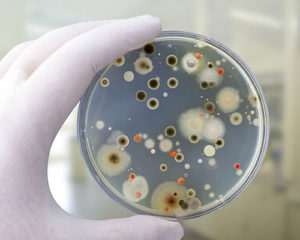Even before the COVID pandemic, multiple studies have shown significant bacterial and fecal contamination on touch screens deployed in public venues1.

Even recently disinfected surfaces are home to bacterial contamination.
A 2018 study specific to airport displays in 18 US airports2 was shocking, revealing that bacteria counts of over 250,000 colony forming units (CFU) per square inch were present on check-in touch screens. One screen measured over 1,000,000 CFUs! By comparison, the CFU count for a typical home toilet seat is a measly 178 CFU’s per square inch, more than 1,000 times less than the airport touch screens.
While providing disinfecting wipes nearby or stating that the screens are disinfected at regular intervals may provide the illusion of safety, a study3 published in the American Journal of Infection Control in June, 2015, demonstrated that the reduction in pathogens is temporary.

